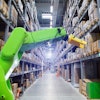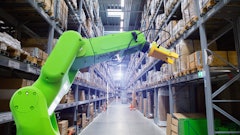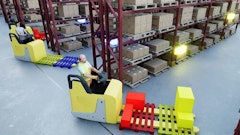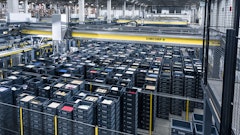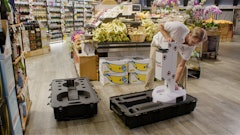
It’s been five-plus years since the iPhone and the App store kicked off the modern mobile technology boom. Since then, we’ve seen how quickly mobile devices have become a real game changer for businesses. Take for example the retail sector. Consumers love to shop with their smartphones and tablets, while retailers big and small have embraced mobile devices for all manner of tasks from sales to service to inventory management.
Now, mobile devices are just beginning to make inroads with supply chain management software. Technology vendors are accelerating their efforts to develop new products and add mobility to existing offerings. At Manhattan Associates, customer demand to “make it mobile” has prompted us to create a development team dedicated to mobile applications that extend the reach of Manhattan’s Supply Chain Commerce solutions.
We’re already there with mobile apps for Store Inventory, Supplier Enablement, and Mobile Supply Chain Intelligence. But more and more customers are asking us for ways to leverage mobile technologies throughout their distribution operations, particularly for their labor supervision within the warehouse.
Let me explain why this matters. In any warehouse environment, supervisors are responsible for many day-to-day tasks that need to be done for employees: people forgetting to clock in, people forgetting to clock out, people wanting to know where they stand in terms of their productivity. Supervisors need to understand where bottlenecks are forming, and where the activities are not being performed at the productivity levels that they should be. There’s also a lot of coaching involved—supervisors need to train and monitor new hires and as well as observe underperformers. And all throughout the process, supervisors are expected to provide feedback to employees.
Supervisors need to be maximizing the hours they spend on the floor engaged with and observing employees. The conundrum? Most labor management technology and tools are only accessible via that computer back in their office.
Let’s face it—a supervisor’s day still involves a lot of running back and forth between the warehouse floor and their offices, where the labor management software lives only on their desktop. In this age of mobile technology, the act of having to run back to your computer to get information almost seems archaic.
So, how do you reconcile that reality with the need to streamline operations with a higher supervisor to employee ratio? By putting that power at the supervisor’s fingertips, using dashboard-enabled mobile devices to monitor, reward or coach outlying performers on the spot.
For customers using Manhattan Labor Management, the feedback has been overwhelmingly positive. One large retail customer told us that prior to the introduction of mobile devices, their supervisor spent 75 percent of their time in their offices and only 25 percent of their time on the floor. After deploying mobile devices, their supervisors now spend 75 percent of their time on the floor with the employees. This increase in face time is huge. Mobile apps can free a supervisor to spend less time on paperwork and more time on engagement. And, this shift to more time on the floor hasn’t gone unnoticed by employees.
Customers tell us that mobile apps are actually improving the relationship between the supervisor and the employee. Supervisors have more quality time to spend with that employee one on one, improving morale and enhancing productivity.
Here’s an example: let’s say an employee wants to know what their quality rating is. In most DCs today, a supervisor would have to take a note, go back to their office, look it up, and then go back out on the floor and tell the employee. They get those requests all the time, and sometimes they’re able to address them, but often it just gets lost in the shuffle. Furthermore, that lack of follow-through creates a credibility issue between the supervisor and the employee.
Or, consider what happens when an employee forgets to clock in. They’re out on the floor, they’re working, but there is no clock-in. That means the supervisor has to make a note, go back to their office and clock them in.
Take these same scenarios, but now that supervisor can pull up that data on their tablet or smartphone to answer performance data or clock in an employee right on the spot.
Think about it—when a supervisor doesn’t have to trek back to their office to sift through information, they’re able to answer questions faster and spend more time on the floor, using their mobile device to take notes and keep track of employees on a one-to-one basis. Mobile apps give that supervisor a real time snapshot of their labor force performance across the board. Tardiness, productivity, utilization, safety, and quality—all of that should be at their fingertips while they are engaging with any given employee on the floor.
Coaching is another area where going mobile can significantly enhance operations. Coaching requires spending time on the floor observing and documenting performance. It might be measuring how well that new hire is learning their job. Sometimes it means creating a paper trail in the event they have to discipline or terminate the employee. In the past, a supervisor would have to go get a clipboard and paper, pull up the Standard Operating Procedure (SOP), and they’d take notes that would be filed or input when they got back to their office. By adding an app-enabled mobile device to this situation, a supervisor can access the SOP and forms, take notes and input data on the floor that synchronizes with the desktop application. That’s a huge timesaver, which can dramatically increase the amount and quality of time a supervisor can spend interfacing with employees.
For your distribution operation, it’s only a matter of time before mobile apps become an everyday tool in the warehouse. And when that time comes for your operation, there are a few things to consider before jumping into the technology: what functionality will you need from a mobile app? How will you prepare for pilot and deployment? What kind or kinds of devices will you use? If you buy iPads for all your supervisors, will they get to take them home? What apps do you make available or block (e.g. Facebook)? These are issues most companies haven’t even thought about yet. Adding mobility to any operation will require training and setting new expectations and policies.
Now is the time for you to start planning for mobile apps within your distribution environment. Going mobile with labor management solutions can and will transform the role of the supervisor in your warehouse. Empowering that supervisor by putting actionable information at their fingertips can truly improve performance and build strong relationships between the workforce and management.



